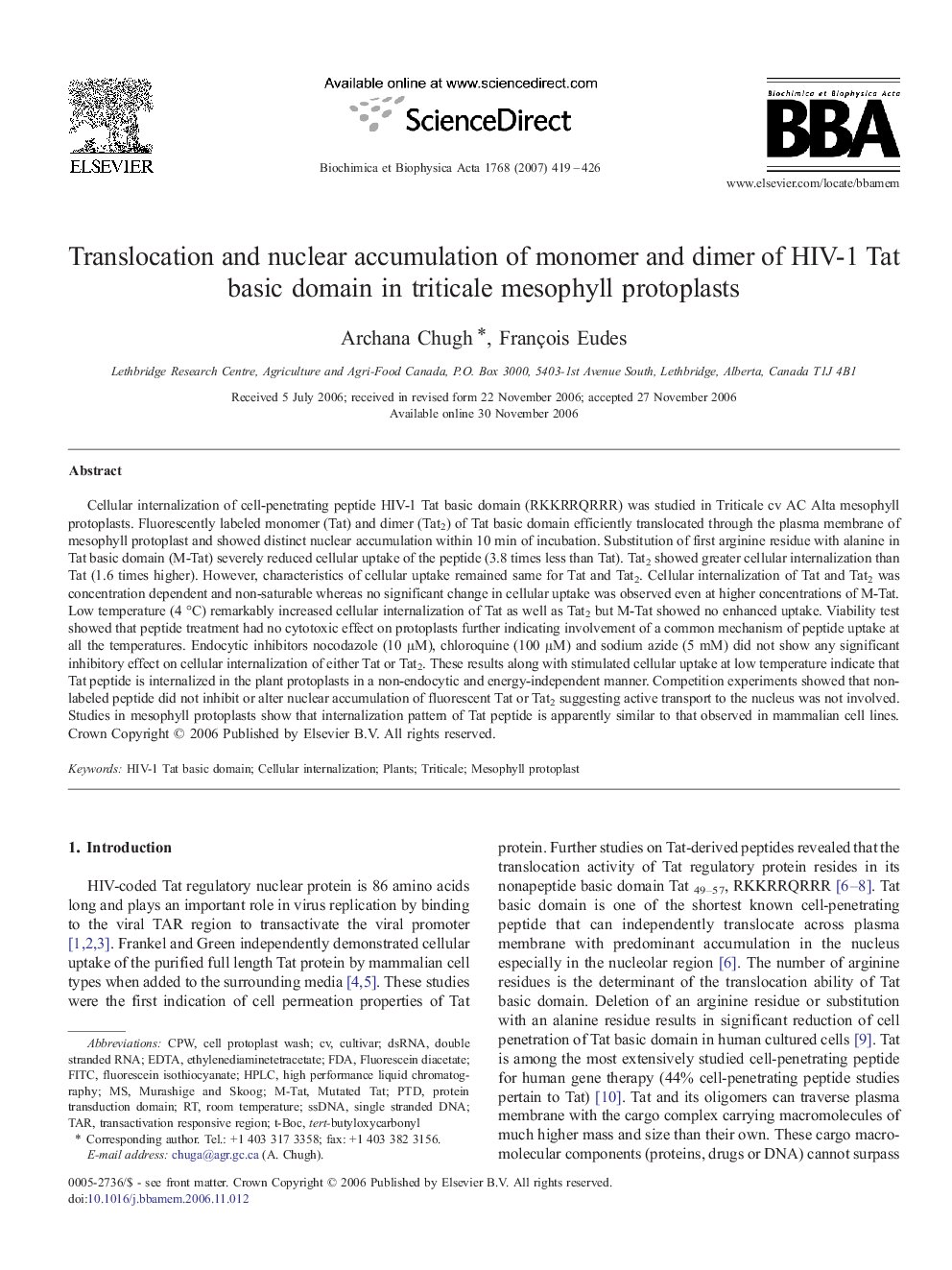| Article ID | Journal | Published Year | Pages | File Type |
|---|---|---|---|---|
| 1945840 | Biochimica et Biophysica Acta (BBA) - Biomembranes | 2007 | 8 Pages |
Cellular internalization of cell-penetrating peptide HIV-1 Tat basic domain (RKKRRQRRR) was studied in Triticale cv AC Alta mesophyll protoplasts. Fluorescently labeled monomer (Tat) and dimer (Tat2) of Tat basic domain efficiently translocated through the plasma membrane of mesophyll protoplast and showed distinct nuclear accumulation within 10 min of incubation. Substitution of first arginine residue with alanine in Tat basic domain (M-Tat) severely reduced cellular uptake of the peptide (3.8 times less than Tat). Tat2 showed greater cellular internalization than Tat (1.6 times higher). However, characteristics of cellular uptake remained same for Tat and Tat2. Cellular internalization of Tat and Tat2 was concentration dependent and non-saturable whereas no significant change in cellular uptake was observed even at higher concentrations of M-Tat. Low temperature (4 °C) remarkably increased cellular internalization of Tat as well as Tat2 but M-Tat showed no enhanced uptake. Viability test showed that peptide treatment had no cytotoxic effect on protoplasts further indicating involvement of a common mechanism of peptide uptake at all the temperatures. Endocytic inhibitors nocodazole (10 μM), chloroquine (100 μM) and sodium azide (5 mM) did not show any significant inhibitory effect on cellular internalization of either Tat or Tat2. These results along with stimulated cellular uptake at low temperature indicate that Tat peptide is internalized in the plant protoplasts in a non-endocytic and energy-independent manner. Competition experiments showed that non-labeled peptide did not inhibit or alter nuclear accumulation of fluorescent Tat or Tat2 suggesting active transport to the nucleus was not involved. Studies in mesophyll protoplasts show that internalization pattern of Tat peptide is apparently similar to that observed in mammalian cell lines.
